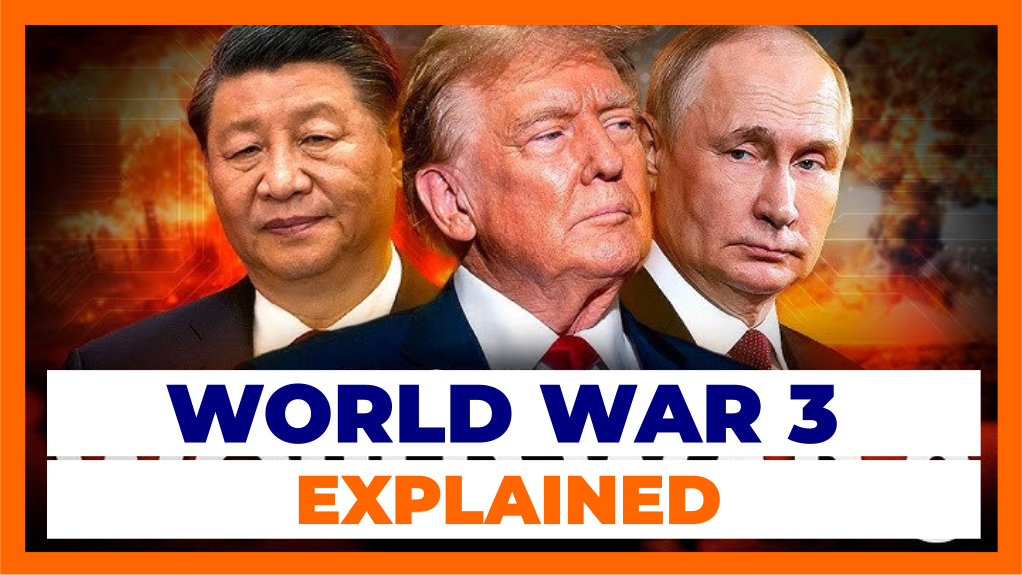
Introduction: The Looming Threat of World War 3
Political analysts, military experts, and world leaders have intensely debated whether World War 3 is on the horizon. Given the escalating global tensions, the possibility of a large-scale conflict seems more tangible than ever before. Various flashpoints around the globe fuel fears of a broader confrontation, with two primary disputes at the center of discussions: the ongoing Russia-Ukraine war and the rising tension between China and Taiwan.
These geopolitical issues have brought together major global powers, leading to complex dynamics involving military alliances, economic sanctions, and the potential for military escalation. Additionally, NATO’s role in these regions and its strategic importance have drawn significant attention as the alliance continues to shape the course of international relations.
This article delves into these conflicts, analyzing the risks, the involvement of global powers, and the prospects for peace or war. By understanding the current state of affairs in Ukraine, Taiwan, and the broader international community, we can better assess the likelihood of World War 3 and the consequences it would bring.
Global Tensions and Their Implications for World War 3
Global tensions have been steadily rising in recent years, exacerbated by the actions of authoritarian regimes, shifting alliances, and unresolved territorial disputes. While these tensions have been simmering for decades, the scale of conflict in places like Ukraine and the South China Sea has made the possibility of a World War 3 more concerning.
Russia-Ukraine Conflict: A Power Struggle in Europe
The Russia-Ukraine conflict, which began in 2014 with Russia’s annexation of Crimea, escalated in 2022 when Russia launched a full-scale invasion of Ukraine. This war has drawn in NATO allies, with countries like the United States, the United Kingdom, and various European nations offering military and economic support to Ukraine.
The conflict has already led to thousands of casualties and displaced millions of people, and it continues to disrupt the European security order. The involvement of NATO has been crucial for Ukraine, as the alliance has provided advanced weapons systems, intelligence, and logistical support. However, Russia perceives NATO’s involvement as a direct threat to its sphere of influence and security, leading to heightened rhetoric and military actions.
One of the main concerns regarding the Russia-Ukraine war is the risk of escalation. The presence of nuclear weapons in Russia’s arsenal and the potential for miscalculation in battle zones could trigger a more significant conflict. The U.S. and NATO’s support for Ukraine has complicated relations with Russia, and the possibility of a confrontation between NATO forces and Russian troops, though unlikely, remains a real risk.
China-Taiwan: A Powder Keg in the Pacific
On the other side of the globe, the China-Taiwan issue remains one of the most volatile geopolitical concerns. China views Taiwan as a breakaway province that must be reunified with the mainland by force if necessary. Despite Taiwan’s democratic governance and independent status, Beijing has made it clear that it intends to assert control over the island, leading to mounting fears of an imminent invasion.
While not officially recognizing Taiwan as a separate country, the United States has committed to supporting Taiwan’s defense through the Taiwan Relations Act. This law enables the U.S. to provide military aid to Taiwan to help maintain its self-defense capabilities. However, this situation has placed the U.S. in direct opposition to China’s regional ambitions.
In recent years, China has ramped up its military presence around Taiwan, conducting frequent military drills and threatening the use of force. Meanwhile, Taiwan has bolstered its defense capabilities with assistance from the U.S. and other Western allies. The situation has become even more tense with China’s rapid military modernization, including advancements in missile technology, naval assets, and air superiority.
The threat of World War 3 in the context of China-Taiwan comes from the potential for the U.S. and its allies to be drawn into a conflict with China if Beijing decides to invade Taiwan. A military clash over Taiwan could result in widespread regional instability, drawing in global powers and threatening to escalate into a larger war.
NATO’s Role in Global Tensions
The North Atlantic Treaty Organization (NATO) plays a critical role in shaping the international response to conflicts like the Russia-Ukraine war and the China-Taiwan crisis. As the world’s most powerful military alliance, NATO has been key in deterring Russian aggression in Europe and preventing Chinese expansion in the Indo-Pacific.
NATO and the Russia-Ukraine War
NATO’s involvement in Ukraine has been a point of contention with Russia, which views the alliance’s expansion eastward as a direct threat to its security. After the collapse of the Soviet Union in 1991, several former Eastern Bloc countries, including Poland, the Czech Republic, and Hungary, joined NATO. This expansion was seen as a move by NATO to contain Russia, but it also fueled tensions that have contributed to the current conflict in Ukraine.
While NATO has not directly intervened in the war, its support for Ukraine has been instrumental. The alliance has provided Ukraine with critical military supplies, training, and intelligence to counter Russian advances. However, NATO’s involvement has remained cautious in avoiding confrontation with Russian forces.
NATO and China-Taiwan Tensions
NATO’s role in the China-Taiwan issue is more complex. While the alliance has not been directly involved in Taiwan’s security, its member countries, particularly the U.S., have significantly ensured Taiwan’s defense. NATO’s presence in the Asia-Pacific region is growing, with countries like Japan, South Korea, and Australia strengthening their ties with the alliance to counter China’s increasing military assertiveness.
The growing rivalry between the U.S. and China over Taiwan has led to heightened tensions in the Indo-Pacific. NATO’s involvement in the region may not directly address the Taiwan issue. Still, the alliance’s presence is a deterrent to any potential Chinese aggression, providing security to regional allies.
Other Flashpoints: The South China Sea and Middle East Conflicts
In addition to the Russia-Ukraine and China-Taiwan conflicts, other global flashpoints contribute to the likelihood of World War 3. The South China Sea, a vital waterway with strategic economic importance, has been contentious due to territorial disputes between China and several Southeast Asian countries. China has militarized several islands in the region, leading to clashes with U.S. naval forces and regional powers.
Meanwhile, the Middle East remains a hotbed of conflict, with ongoing tensions between Israel and Iran, the war in Syria, and the unstable situation in Afghanistan. While these conflicts are primarily regional, they have the potential to draw in global powers, especially if the situation deteriorates further.
Conclusion: Are We on the Brink of World War 3?
While the possibility of World War 3 remains a topic of intense debate, current global tensions suggest that the world is at a critical juncture. The Russia-Ukraine war and the rising tensions between China and Taiwan are significant threats to international peace, with the potential for escalation if not carefully managed.
NATO’s role in supporting Ukraine and deterring Chinese aggression in the Indo-Pacific is pivotal in preventing these conflicts from spiraling into a larger, more devastating war. However, the international community must continue to work towards diplomatic solutions, conflict resolution, and de-escalation strategies to avoid the catastrophic consequences of a global war.
Ultimately, whether we are on the brink of World War 3 or can avoid it depends on the actions of world leaders, the strategies of military alliances like NATO, and the ability of global powers to navigate these complex and volatile situations. The next few years will be critical in determining whether we can avoid the prospect of widespread conflict.



